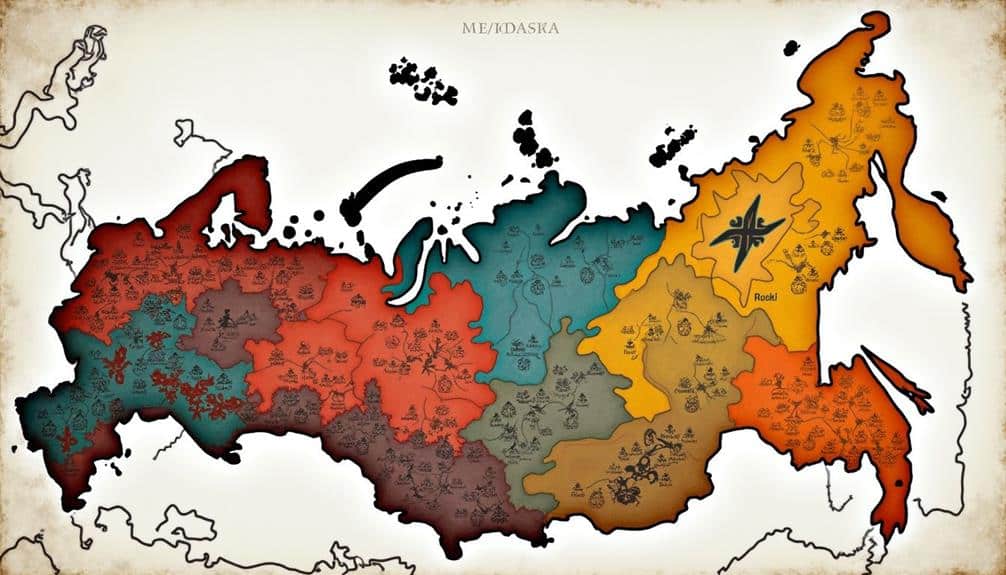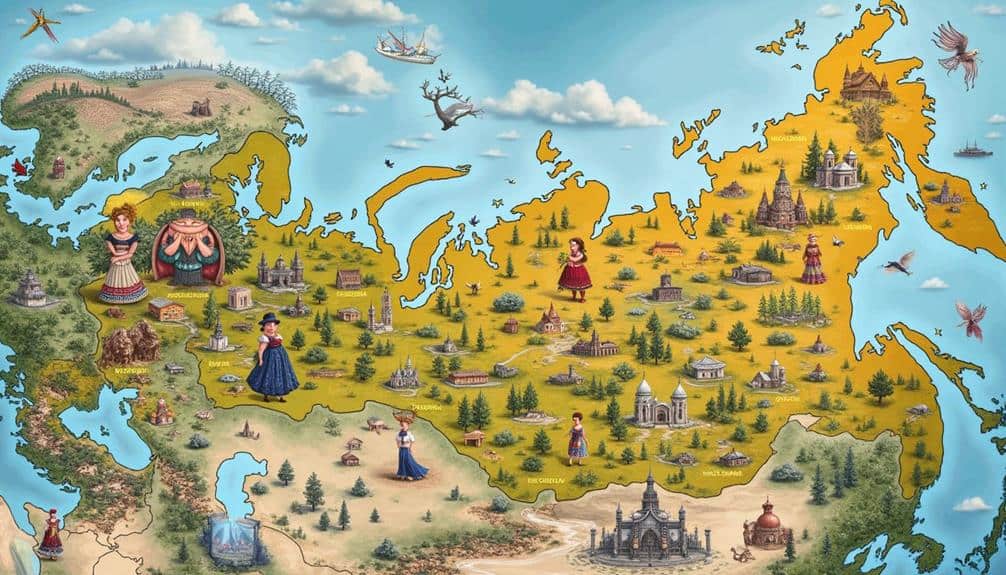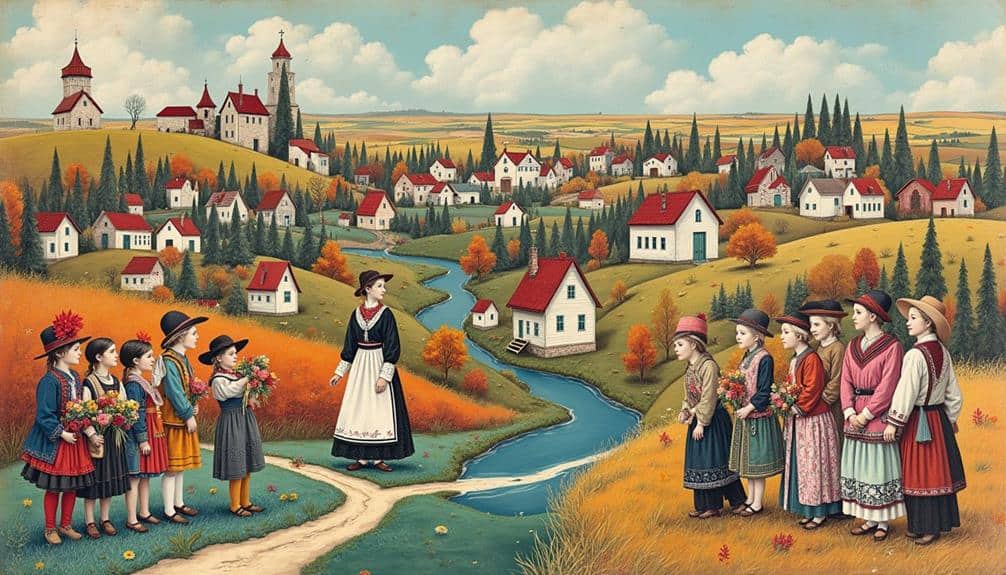Exploring the richness of Russian dialects uncovers an intricate mosaic of linguistic diversity that offers profound insights into the nation’s history and regional idiosyncrasies. The distinct phonetic, vocabulary, and grammatical nuances found in various dialects, from the precise articulation of the Northern regions to the idiomatic expressions rooted in Southern agricultural life, serve as a representation of the diverse cultural and environmental conditions that have shaped them. Understanding these dialectal variations not only enhances our appreciation of the Russian language’s evolution but also illuminates the cultural identities and traditions preserved within these unique speech patterns. What further complexities lie within this linguistic tapestry awaits discovery.
Historical Evolution of Russian Dialects

Throughout its history, the Russian language has evolved considerably, giving rise to diverse dialects. The linguistic roots of Russian can be traced back to the Proto-Slavic language, which also birthed other Slavic tongues such as Polish and Czech.
As the early East Slavic tribes settled and expanded across vast territories, their speech began to diverge, resulting in numerous regional variations.
The development of Old East Slavic in the 9th century marked a significant phase in the evolution of Russian dialects. This period witnessed the formation of several principalities, each fostering its own linguistic nuances.
The Mongol invasion in the 13th century further influenced the linguistic landscape, contributing to the differentiation of dialects as regions became more isolated.
Northern Dialects: Key Features
Emerging from the historical and geographical context of northern Russia, Northern Russian dialects exhibit distinctive phonological and lexical characteristics that set them apart from other regional varieties. One prominent feature is the phonetic variation in vowel pronunciation. In these dialects, unstressed vowels often retain their clarity, unlike in Standard Russian where they tend to reduce to a schwa sound. This clarity can make Northern dialects sound more “precise” to an outside listener.
In addition to phonetic variations, Northern dialects also demonstrate unique vocabulary distinctions. For instance, words related to everyday objects and activities can differ considerably from their counterparts in other Russian dialects. These distinctions can often be traced back to historical interactions with neighboring cultures and the specific environmental conditions of the north.
For example, terms for various types of snow and ice are more nuanced and varied, reflecting the importance of these elements in daily life.
Moreover, Northern dialects often preserve older forms of words and grammatical structures that have disappeared from or evolved differently in Standard Russian. This preservation offers linguists valuable insights into the historical development of the Russian language and its regional diversity.
Southern Dialects: Key Features

Examining the Southern Russian dialects reveals a rich tapestry of linguistic features that distinguish them markedly from their northern counterparts.
One of the most striking aspects of Southern Russian dialects is their phonetic variations. For instance, these dialects often feature the fricative “g”, which is pronounced more like an English “h”. This phonetic trait is distinct from the hard “g” sound commonly found in northern dialects. Additionally, Southern dialects tend to soften consonants more frequently, leading to a mellower overall sound.
Vocabulary distinctions also play a significant role in differentiating Southern Russian dialects. Words and expressions unique to the southern regions often reflect the historical and cultural influences specific to that area.
For example, agricultural terms and idiomatic expressions related to farming and rural life are more prevalent in Southern dialects. This vocabulary reflects the region’s historical focus on agrarian lifestyles, contrasting with the industrial and urban lexicon more typical of Northern Russian dialects.
Influence of Migration and Conquest
The influence of migration and conquest on Southern Russian dialects is profound and multifaceted. Historical movements of diverse ethnic groups across Southern Russia have led to significant cultural exchange, impacting the linguistic landscape. Over centuries, the region experienced invasions and settlements by the Mongols, Tatars, and various Turkic tribes, each contributing to the local dialects.
This amalgamation of languages and cultures fostered a unique linguistic assimilation, where vocabulary, phonetic patterns, and syntactic structures from different languages were integrated into Southern Russian dialects. For instance, the Mongol-Tatar yoke left an indelible mark on the vocabulary, with numerous loanwords related to governance, military, and daily life.
Additionally, the migration of Turkic-speaking peoples introduced specific phonetic and grammatical features, enriching the dialects with a distinct flavor. The resulting dialectal variations reflect a tapestry woven from multiple linguistic threads, exemplifying how external influences can shape and diversify a language.
Furthermore, these dialects serve as a living reflection of the region’s history of conquests and migrations, offering insights into the dynamic processes of linguistic evolution. Examining these influences not only enhances our understanding of Russian dialectology but also underscores the broader themes of cultural exchange and linguistic assimilation throughout history.
Preserving Dialectal Diversity

Efforts to preserve dialectal diversity in Russia are akin to safeguarding a cultural treasure trove. Dialect preservation not only maintains linguistic variety but also guarantees the retention of unique cultural identities and historical narratives.
Russian dialects, embodying centuries of regional traditions and social practices, are invaluable to both linguists and anthropologists. Each dialect carries its own lexicon, phonetics, and syntactic structures, reflecting the cultural significance of local customs and heritage.
Organizations and governmental bodies are increasingly recognizing the importance of dialect preservation. Initiatives such as documenting spoken dialects, creating digital archives, and promoting educational programs aim to keep these linguistic variants alive.
Furthermore, local communities play a pivotal role in this endeavor, often spearheading grassroots movements to teach younger generations their ancestral dialects.
However, the rapid pace of urbanization and the dominance of standardized Russian pose significant threats to these efforts. It is imperative that dialectal diversity is given equal importance alongside the standard language to foster a richer, more inclusive linguistic landscape.
In preserving these dialects, Russia not only protects its linguistic diversity but also honors the cultural significance that each dialect represents.





